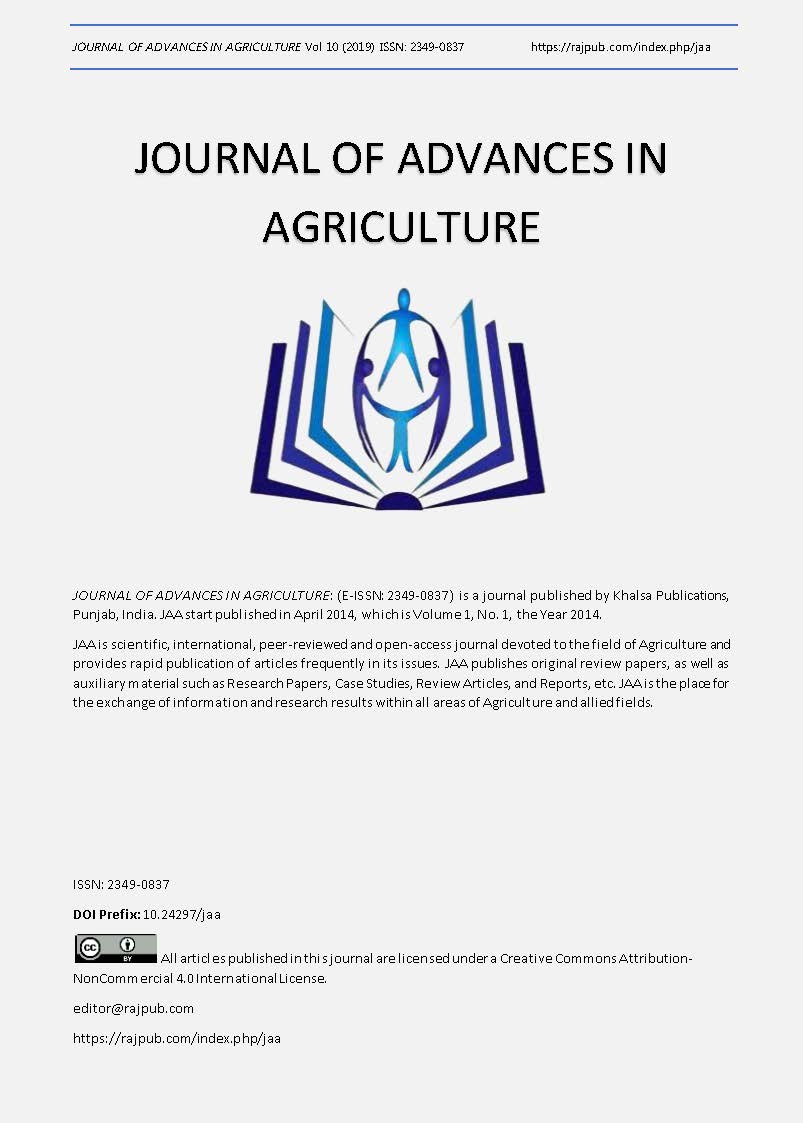Examination of Effect of Electrochemically Activated Water Solutions on Candida albicans After Different Periods of Storage
DOI:
https://doi.org/10.24297/jaa.v10i0.8473Keywords:
Anolyte, Catholyte, Virkons, Candida Albicans, Antimicrobial ActivityAbstract
Studies to determine the sensitivity of Candida albicans to anolyte and catholyte of 0.5% NaCl and a combination of 0.5% NaCl and 0.5% Na2CO3 were performed. Both anolytes killed the tested strains in suspensions (106 cells/ml) within 5 min. The catholytes showed low antimicrobial activity. The inhibitory properties of the tested anolytes were fully preserved over a period of 2 months when stored in the dark at room temperature, but of the catholytes - for no more than 2 weeks. These results show that anolytes are promising antimicrobial agents with very high activity against C. albicans.
Downloads
References
Barnabé, W., T. de Mendonça Neto, F. C. Pimenta, L. F. Pegoraro, J. M. Scolaro, 2004. Efficacy of sodium hypochlorite and coconut soap used as disinfecting agents in the reduction of denture stomatitis, Streptococcus mutans, and Candida albicans. Journal of Oral Rehabilitation, 31, 5, 453-459.
Fukuzaki, S., 2006. Mechanisms of actions of sodium hypochlorite in cleaning and disinfection processes. Biocontrol Sci., 11(4), 147–157.
Gurgulova, K., Georgieva T., Karadzhov S., I. Yordanov, G. Atanasov, 2010. Biocidal action of electrochemically activated solutions (anolytes) against microorganisms responsible for rotten diseases in bee brood. NVS, Contract № 6 / 07.07.2010.
Gurgulova, K., S. Karadzhov, Y. Gogov, T. Georgieva, Yordanov I., 2011. Application in veterinary medicine of anolytes obtained by electrochemical activation of aqueous solutions of alkali and alkaline earth salts. Agricultural Academy, Anim Breeding Sci. XLVIII, 1/2011.
Helme, A. J., M. N. Ismail, F. J. Scarano, C. L. Yang, 2010. Bactericidal efficacy of electrochemically activated solutions and of commercially available hypochlorite. – Br. J. Biomed Sci., 67, 3, 105–108.
Heredia-Rojas, J. A., R. Gomez-Flores, A. O. Rodríguez-de la Fuente, E. Monreal-Cuevas, A. C. Torres-Flores, L. E. Rodríguez-Flores, M. Beltcheva, and A. C. Torres-Pantoja, 2012. Antimicrobial effect of amphotericin B electronically-activated water against Candida albicans. African Journal of Microbiology Research, 6, 15, 3684-3689. DOI: 10.5897/AJMR12.171, ISSN 1996.
Kühn, K. P., I. F. Chaberny, K. Massholder, M. Stickler, V. W. Benz, H.-G.Sonntag, L.Erdinger, 2003. Disinfection of surfaces by photocatalytic oxidation with titanium dioxide and UVA light. Chemosphere, 53, 1, 71-77.
Miroshnikov, A. I., 2002 Stimulation and inhibition of Escherichia coli cell growth during cultivation in the catholyte and anolyte of culture medium. – Biofi zika, 47(2), 304–308.
Nakamura, C. V., K. Ishida, L. C. Faccin, B. P. D. Filho, D. A. G. Cortez, S. Rozental, W. Souza, T. Ueda-Nakamura, 2004. In vitro activity of essential oil from Ocimum gratissimum L. against four Candida species. Research in Microbiology, 155, 7, 579-586.
Popova, T. P., T. E. Petrova, M. D. Kaleva, and S. D. Karadzhov, 2018. Comparative study of the effect of electrochemically activated water solutions on Pseudomonas aeruginosa, 2018. Acta Microbiologica Bulgarica, 34, 3, 160-164. ISSN 0204-8809.
Popova, T. P., T. Petrova, and S. Karadzhov, 2016a. Investigation of the biocidal effect of electrochemically activated aqueous sodium shloride solution on Gram-negative pathogenic bacteria. Int. J. Curr. Microbiol. App. Sci., 5, 1, 624-632. (DOI : http://dx.doi.org/10.20546/ijcmas.2016.501.063
Popova, T. P., T. Petrova, and S. Karadzhov, 2016b. Investigation of the Action of the Anolyte after Different Storage Times on the Gram-negative Bacteria. Int. J. Curr. Microbiol. App. Sci., 5, 9, 530-539. doi : http://dx.doi.org/10.20546/ijcmas.2016.509.059.
Popova, T. P., T. Petrova, S. Karadzhov, and G. Krustanova, 2016 c. Investigation of the biocidal effect of electrochemically activated aqueous sodium chloride solution on Staphylococcus aureus. Traditions and modernity in veterinary medicine, 1, 1, 67-72. ISSN 2534-9333, e- ISSN 2534-9341.
Robinson, G. M., S. W. Lee, J. Greenman, V. C. Salisbury, D. M. Reynolds, 2010. Evaluation of the efficacy of electrochemically activated solutions against nosocomial pathogens and bacterial endospores. Lett. Appl. Microbiol., 50(3), 289–294.
Shai, L.J., L. J. McGaw, P. MasokoJ., N. Eloff, 2008. Antifungal and antibacterial activity of seven traditionally used South African plant species active against Candida albicans. South African Journal of Botany, 74, 4, 677-684.
Shetty, N., S. Srinivasan, J. Holton, G. L. Ridgway, 1999. Evaluation of the microbicidal activity of a new disinfectant: Sterilox® 2500 against Clostridium difficile spores, Helicobacter pylori, vancomycin-resistant Enterococcus species, Candida albicans, and several Mycobacterium species. The Journal of Hospital Infection, 41, 2, 101–105.
Sokoto, T., T. Srithavaj, S. Thaweboon, B. Thaweboon, B. Shrestha, 2013. In vitro effects of Salvia officinalis L. essential oil on Candida albicans. Asian Pacific Journal of Tropical Biomedicine, 3, 5, 376-380.
Tasheva, Y., Y. Petkov, S. Karadzhov, 2010. Examination of the action of electrochemically activated aqueous solutions (anolytes) on Candida albicans. Traditions and contemporaneity in Veterinary Medicine. Proceedings of the FVM, UF, Sofia, pp. 152-158.
Vianna, M. E., B. P. F.A. Gomes, V. B. Berber, A. A. Zaia, C. C. R. Ferraz, F. J. Souza-Filho, 2004. In vitro evaluation of the antimicrobial activity of chlorhexidine and sodium hypochlorite. Oral Surgery, Oral Medicine, Oral Pathology, Oral Radiology, and Endodontology, 97, 1, 79-84.
Zhelev, G., I. Lazarov, V. Petrov, K. Koev, M. Lyutskanov, 2017. Antibacterial activity of a powder product for floor and litter sanitation in intensive poultry farming. Bulg. J. Vet.Med., 20, Suppl. 1, 204–211.
Downloads
Published
How to Cite
Issue
Section
License
 All articles published in Journal of Advances in Linguistics are licensed under a Creative Commons Attribution 4.0 International License.
All articles published in Journal of Advances in Linguistics are licensed under a Creative Commons Attribution 4.0 International License.




